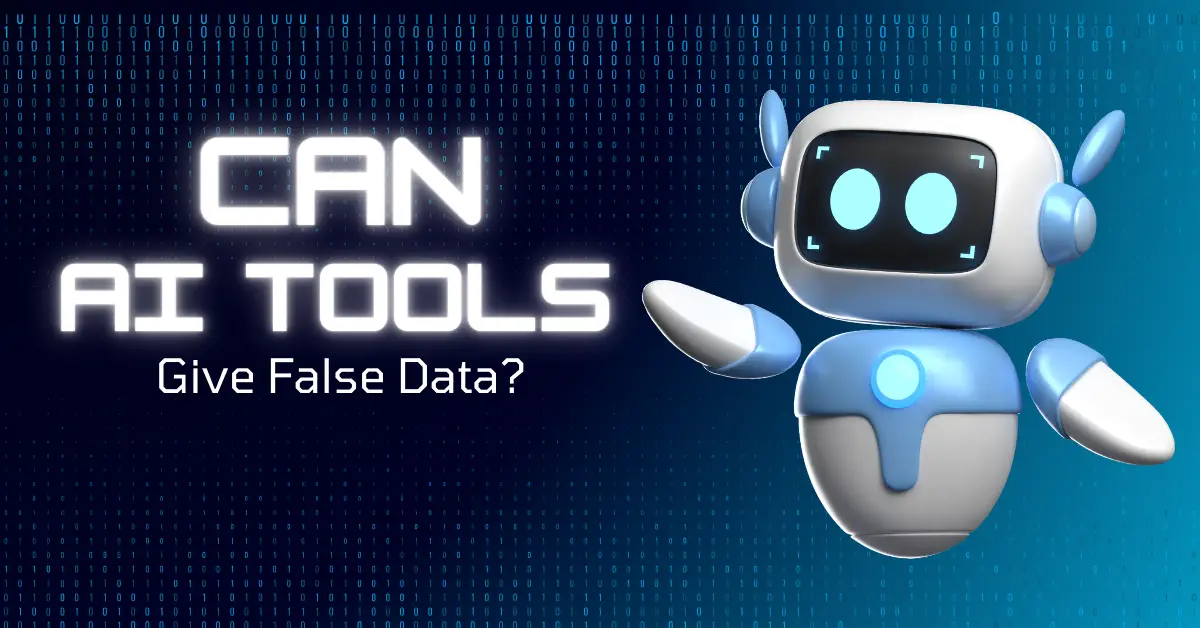In today’s world, we are stepping into the era of AI tools. The use of these tools has rapidly increased over the past few years, with everyone turning to AI to boost productivity.
If you’re also using AI tools like ChatGPT, Google Bard you might wonder how trustworthy the information generated by AI is. Is it possible that AI can generate false information? The simple answer is Yes; AI tools can produce false data. In this article, we will explore how AI can sometimes generate incorrect information and discuss methods to verify the authenticity of the data it provides.
Introduction: A Digital Dilemma
Imagine you’re a student, Alex, excited about technology and AI’s potential. You’ve always been fascinated by how AI can simplify tasks, from writing essays to analyzing complex data. But what happens when this fascination leads to an unexpected twist?
The Accusation: Falsely Accused of Using AI
One day, Alex submits an essay for a competition. It’s well-researched, eloquently written, and impressively thorough. However, soon after submission, Alex faces a shocking accusation: the judges claim the essay was written by AI, not by Alex.
This accusation stings – not only is Alex’s integrity questioned, but it also brings forth the complex issue of AI in academic honesty.
The Role of Artificial Intelligence in Disinformation
This accusation against Alex opens up a broader conversation about AI’s role in spreading or preventing disinformation. Can AI tools, known for their efficiency and accuracy, also be a source of false data? The answer is Yes. AI, like any tool, depends on its usage and the data it’s fed. If the input data is biased or inaccurate, the AI can inadvertently produce misleading results.
The Investigation: Unraveling the Truth
Determined to clear their name, Alex dives into understanding how AI could have been mistakenly identified as the author of the essay. Alex learns about text generation algorithms and how they mimic human writing styles.
Could the AI’s advanced capabilities and Alex’s writing style have been so similar that the judges couldn’t tell them apart?
The Revelation:
Through research, Alex discovers that AI’s ability to mimic human writing can be both a boon and a bane. On the one hand, AI can assist in creating content quickly and efficiently.
On the other hand, it can lead to accusations like the one Alex faces, especially when the AI’s output is indistinguishable from human work.
Addressing the Challenge of AI-Generated Disinformation
The case of Alex’s false accusation highlights the need for a better understanding of AI and its potential pitfalls. It’s essential to educate both the public and those responsible for evaluating content about the capabilities and limitations of AI tools.
To address the challenge of AI-generated disinformation, we can consider the following steps:
Enhanced AI Ethics: Developers and organizations should prioritize ethical AI development, focusing on creating safeguards to prevent malicious use.
Media Literacy: Promoting media literacy can help individuals become more discerning consumers of information. By teaching critical thinking skills, people can better identify false narratives.
Content Verification Tools: Develop tools that can detect AI-generated content and help verify the authenticity of articles, videos, and other media.
Regulation and Accountability: Governments and technology companies should collaborate to establish regulations and hold those who misuse AI tools accountable for their actions.
The Outcome: A Lesson Learned
After a thorough investigation, the judges realize their mistake – Alex’s essay was indeed original. This incident, however, highlights an important lesson: AI’s role in our lives is significant but complex. We must acknowledge its potential to both aid and mislead.
Conclusion: Use AI with Caution
Alex’s story teaches us that while embracing AI’s advancements, we must also be wary of its potential pitfalls. It’s crucial to use AI responsibly, understanding its limitations and the importance of human oversight. As we move forward in this digital age, let’s use AI as a tool for progress, not as a scapegoat for our misunderstandings.
